
tw: drug addiction, abuse, revenge porn
Euphoria (2019) follows a group of teenagers living in small-town America as they navigate the complicated world of sex, drugs, trauma, relationships and identity. Creator, writer and part-director Sam Levinson was inspired by his own experiences with addiction and an Israeli show of the same name. It is narrated by the drug-addicted Rue (played by Zendaya) who deals with depression and bipolar disorder, almost immediately after she leaves a rehabilitation facility following her overdose. She says she is “not the most reliable narrator”, a tongue in cheek line reminiscent of literature essays. With the speed of a feed scroll, she draws us into the lives of several other characters.
Every character is important to the story in some way and the small town setting is integral to facilitating the plot points- with a skate rink, house parties and carnivals as their main sources of available entertainment, the kids pop Molly like candy in search of cheap thrills. Because everyone in the town knows each other, they’re all made hyper-aware of the new girl in town, Jules, who Rue immediately befriends and gradually falls in love with. These close quarters are also the reason why everyone knows Nate’s family and their award-winning chilli; it’s the reason why chilli cook-offs are even a thing in the first place, and also why Rue and Jules can bike literally anywhere.
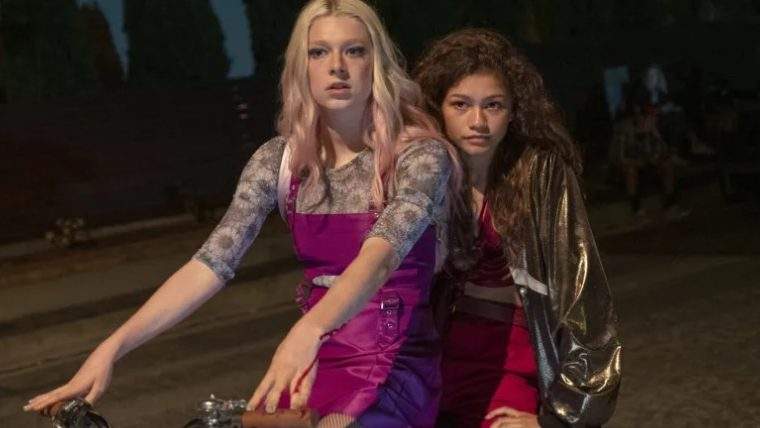
This small town environment helps create the almost magical world we’re dipped in and out of as all of the serious issues the show depicts are developed. Momentary glimpses into Rue’s seemingly omniscient mind also blur the show’s hardcore realism with what comes off as a tamer magical realism. We sometimes live inside Rue’s imagination and are given a break from the major plot-line; she becomes a detective and a teacher, breaking the fourth wall to lecture the audience on the difference between “horrifying” and “terrifying” dick pics. She also solves the mystery of Nate’s psychopathic scheming during a manic episode.
The Cinematography and Aesthetics
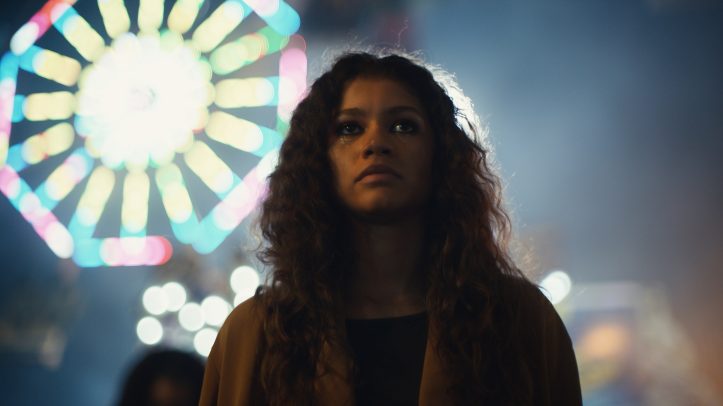
Part of what distinguishes Euphoria and marks it as the show of a generation is the impressive cinematography. It isn’t just pleasing to the eye but rather adds power to the characters and their stories, rendering it impossible to watch while multi-tasking on your phone or laptop for fear that you might miss a detail. The somersaulting camera angles, movements and panning almost situate the viewers in a music video with a very intriguing plot. The way we’re plunged in and out of different characters and their backstories is captivating and created with millennial attention spans in mind as each person has a dedicated episode but the other characters’ stories are also simultaneously developed.
The use of cinematic lighting and intricate set design is deliberately meaningful. Sometimes the multi-coloured LED lights, which alter between red and purple, are there to capture teen bedroom/party aesthetics (yes, gen-z do use this many lights, just look at TikTok). Cinematographer Marcell Rév cultivated the ‘emotional realism‘ of Euphoria through cinematic lighting in order to show the interior world of what teenagers imagine their lives to be.
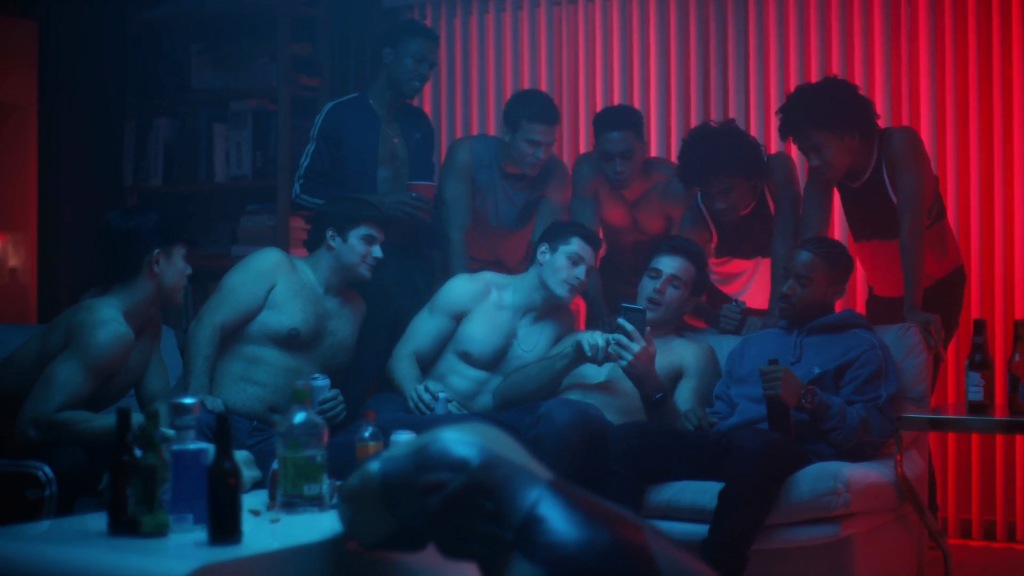
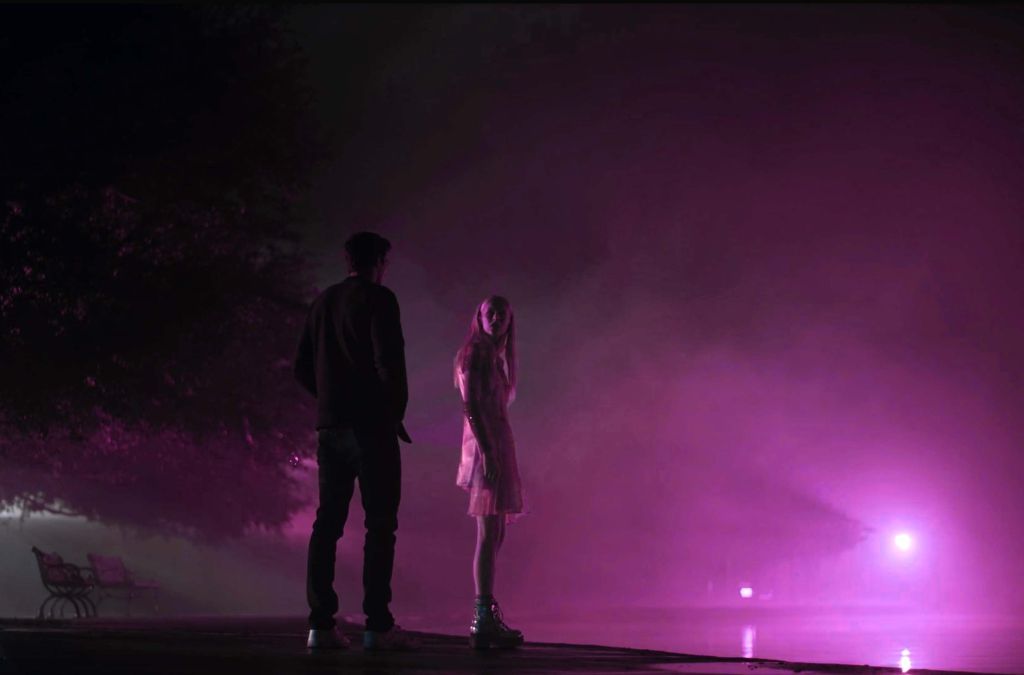
However, the use of saturated colour is also symbolic since Rév used a blue/orange contrast to centre on the ambient blue sky and the lightness of the sun. Kat (played by Barbie Ferreira) is characterised by the colour red after she becomes sexually liberated- and by that I mean she transforms from virgin to financial dominatrix. Her red fishnet top and matching choker is a staple of this growth when she confidently embraces her style and traipses down the mall while vaping, followed by the thirsting gazes of ignored men.
The use of purple at other times combines the stability of blue and the fierceness of red to create an almost ethereal, otherworldly feel to the small-town dynamic- especially when the characters get high, like during Rue and Jules’ bedroom scene.
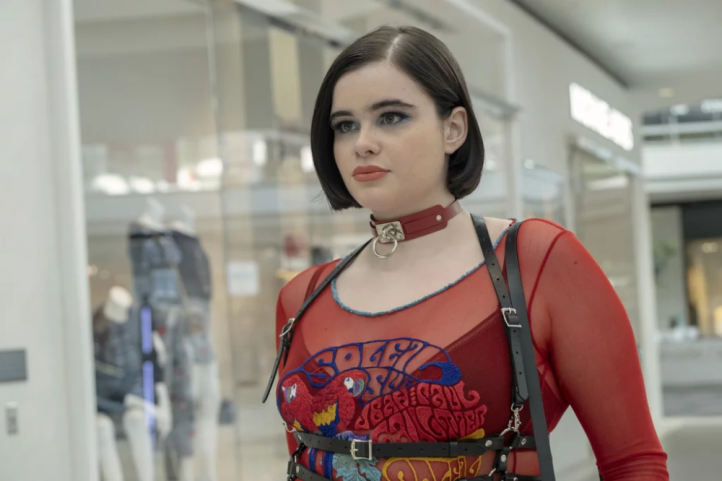
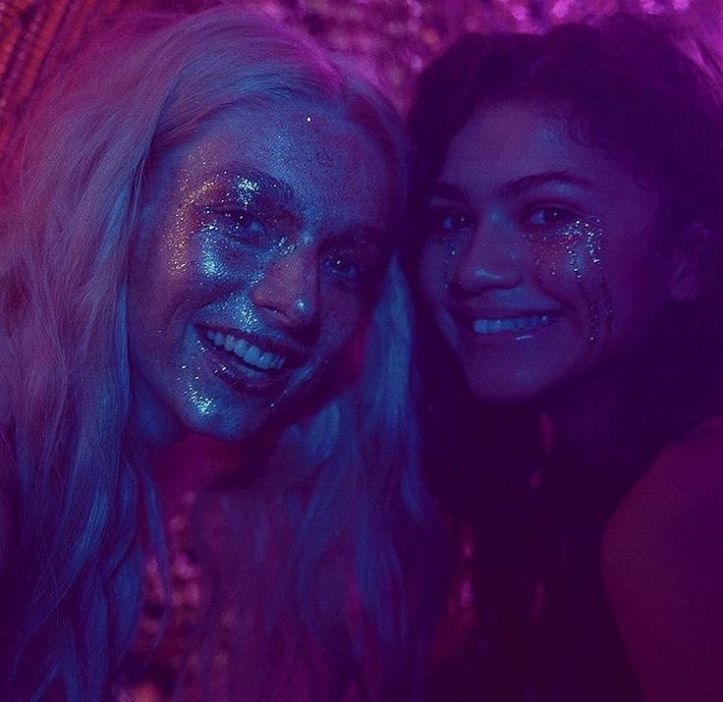
Levinson’s decision to use sound stages for the majority of the show was a surprising take to a gritty teen drama but it opened so many opportunities for the experimental shots which made the carnival episode possible. In this episode, titled ‘Shook One: Pt II’, the lighting, camera movements and aesthetics come together as the camera chaotically whips from character and story, connecting the long scenes in a 10-minute tracking shot which passes the ‘visual baton’ from one character to the next. Rév flawlessly tracked the chaotic environment in an exhilarating movement made possible by a dolly, a technocrane and four camera stitches. The infamous upside-down party scene, where Rue walks on the ceiling and walls, is also a pinnacle of the technical and affective aspects.
The Acting and Plot
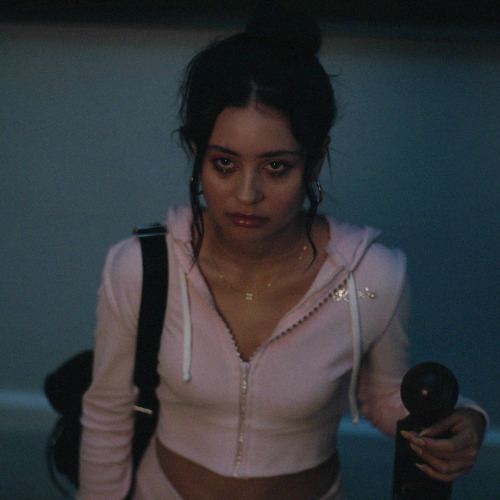
To be quite frank, I was sceptical that Euphoria would live up to the hype it had garnered past the aesthetics of it all. I was familiar with the stills I’d seen on social media but thought it might be something cringe yet vibey, the way Spring Breakers was in 2013. Needless to say (given this long af article), I was wrong.
The acting in Euphoria is phenomenal and, although Zendaya is nominated for an Emmy, every actor has a scene worthy of applause. Jacob Elordi portrays Nate, the popular quarterback and Maddie’s abusive boyfriend whose internalised homophobia begins manifesting itself violently. As he stores a number of dick pics on his phone and seduces Jules via a gay dating app (something similar to Grindr), it is suggested that he’s coming to terms with his sexuality and interest in men.
Nate manipulates, blackmails, gaslights and rages into the role of Euphoria’s resident villain, leading viewers to hate him so intensely that his rather ‘vanilla’ role in The Kissing Booth (where he plays the all-American jock Noah Flynn) is completely forgettable. This all culminates to a standout scene in the final episode, where his complex relationship with his father, constantly foreshadowed, is brought to the forefront in a screaming fit. Apparently, Elordi was acting so intensely that he bled and got a concussion during this scene when he was smashing his head on the wooden floor. The parallels between Nate and his dad are so ingrained in the plot that the dynamic is worthy of further exploration in season two.
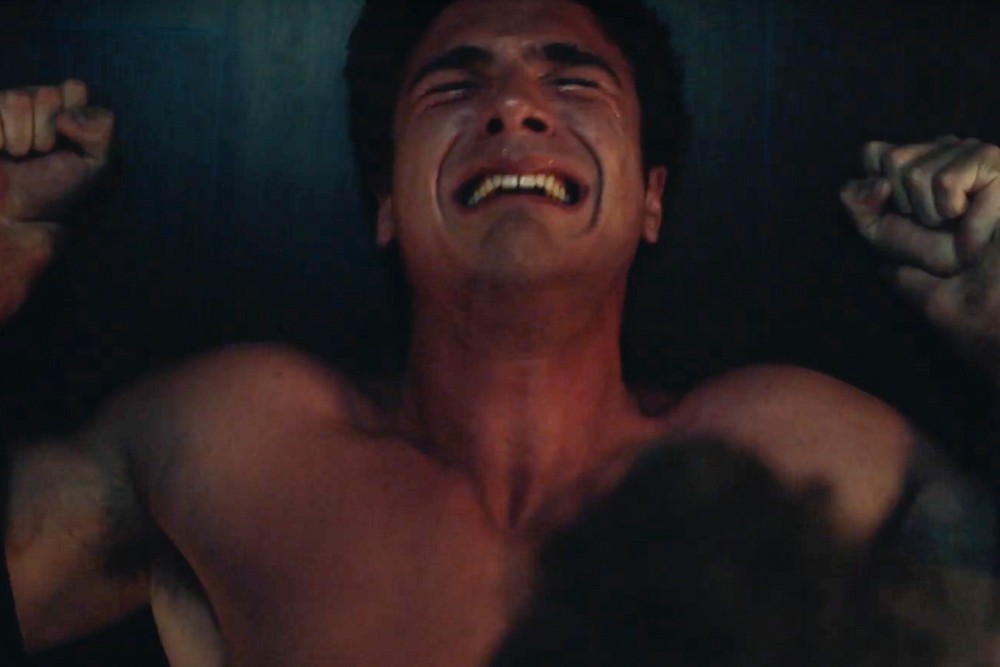
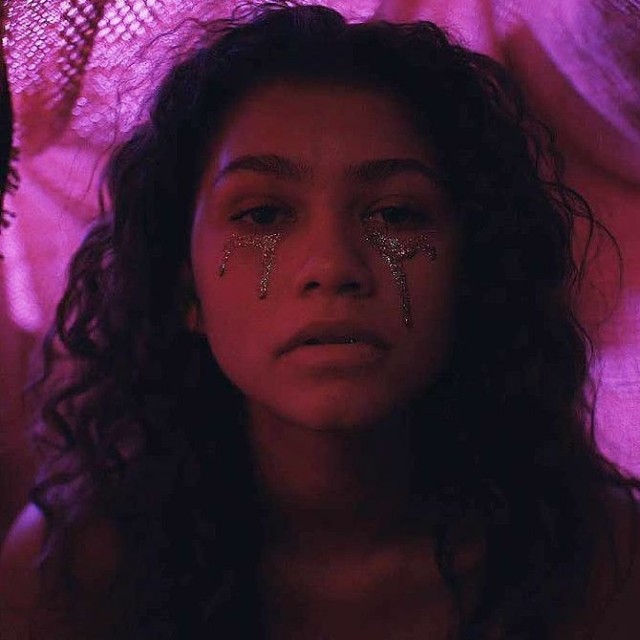
Of course, Zendaya’s acting deserves to be mentioned. In the scene where she is picked up from rehab by her mother and sister, their wholehearted and wholesome singing in the car on the drive home is interspersed with cuts to family arguments in their living room whilst ‘Fly Me to the Moon‘ blasts in the background. The exploration of familial relationships is realistic and multi-dimensional, especially in relation to mental health. In the last episode, a flashback reveals Rue’s mother being very intolerant, speaking to Rue disrespectfully out of frustration and with little understanding of addiction. This is deliberately contrasted to the speech she’s giving in the present moment on learning to help your addicted child and loving them unconditionally.
In contrast to other teen dramas like 13 Reasons Why or Skins, drugs and mental health issues are portrayed honestly and avoid glamorisation. Skins’ infamous character Effy Stonem is somehow made to seem more ‘allusive’ because of her depression which helps characterise her as the mysterious ‘cool girl’; perhaps even a ‘manic pixie dream girl’ if she wasn’t so intimidating. And while Skins portrays the dangers of drug use during Effy’s bad trip in the woods, the long term consequences are hardly considered. In contrast, Rue’s addiction and depression don’t ‘add’ to her personality in any fun or glamorous way.

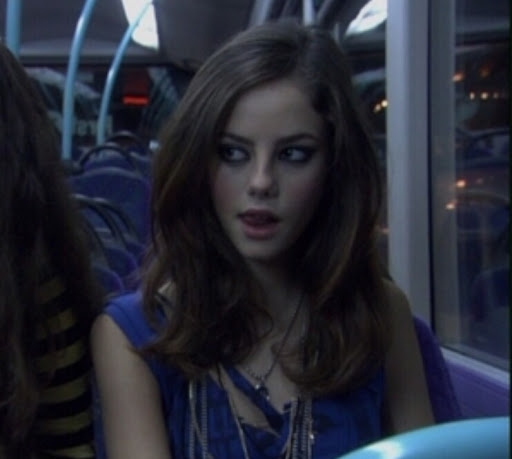
Rue says in one line, “I know I’m not supposed to say this, but drugs are kinda cool…” as she touches Jules’ glitter covered face and they stare at each other in hallucinatory bliss. But this is followed by “…before they ruin your life and everything in it”. The scene where she demands Fez to deal her “a few OCs”, begging with every ounce of her being, is also hard to watch since Rue relies on substance abuse to mute the anxiety that’s consumed her since she was a child. In ‘The Trials and Tribulations of Trying to Pee’, bipolar disorder is also seriously addressed when Rue ends up in the hospital with a kidney infection after a depressive episode prevents her from getting up to pee.
I applaud the story telling and momentary glimpses of vulnerability from each actor. Although Rue’s cold open could be read as slightly pretentious teen melodrama, the rest of the characters’ backgrounds, albeit very brief, are told in a way that helps us understand their current story lines and character arcs.
Cassie’s tale in particular hits the hardest; it explores the concept of ‘daddy issues’ and is placed immediately after we see her interactions with two male characters, one of whom polices her clothing choices (McKay, the beta male sexist) and the other who aggressively lets her know that he only wants to use her for her body (Daniel, the generic white male). The cold opens are just enough to draw viewers in and leave us wanting resolution for the characters in present day while also making their plot lines more complex.
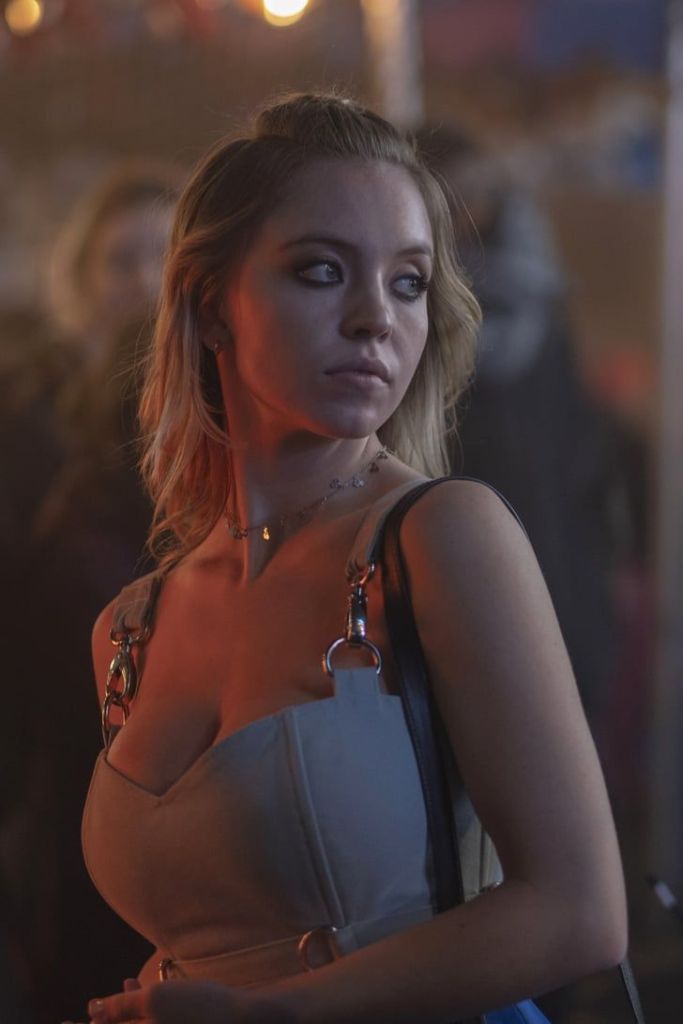

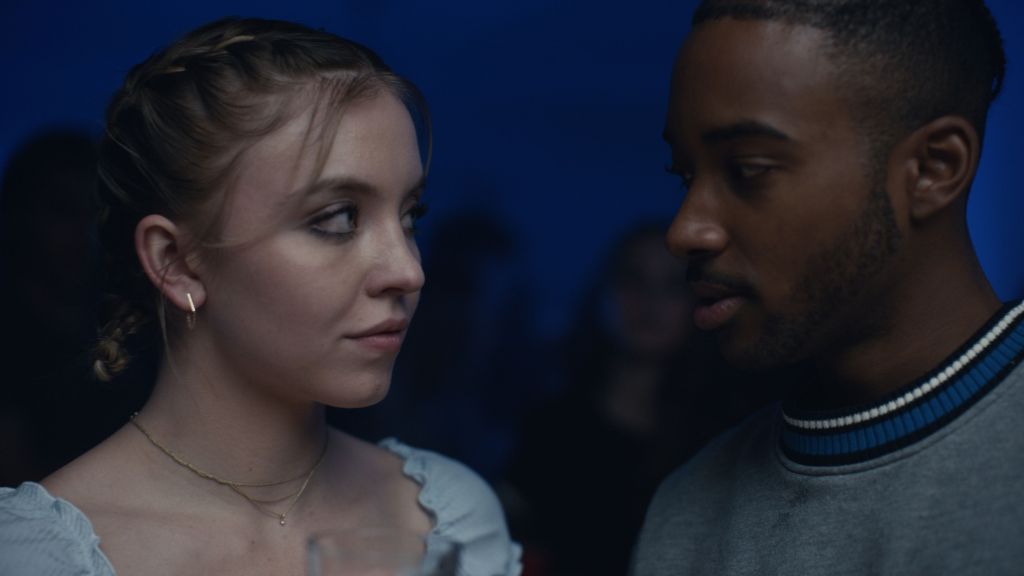
In the space of only eight episodes, the non-linear structure develops the characters even while they are being introduced. Jules, for example, begins as an immediately likeable character but slowly her actions seem unhealthy for Rue’s well-being. I also love how Jules is a trans character in a normal story where her transition isn’t her primary story line- her trans identity is just part of her character rather than her main role or personality. Room is still made for some discussion on queerness and transness, such as the fact that Jules uses men to “conquer femininity” and wants to eventually “level up” and transcend the gender binary along with heteronormativity itself.
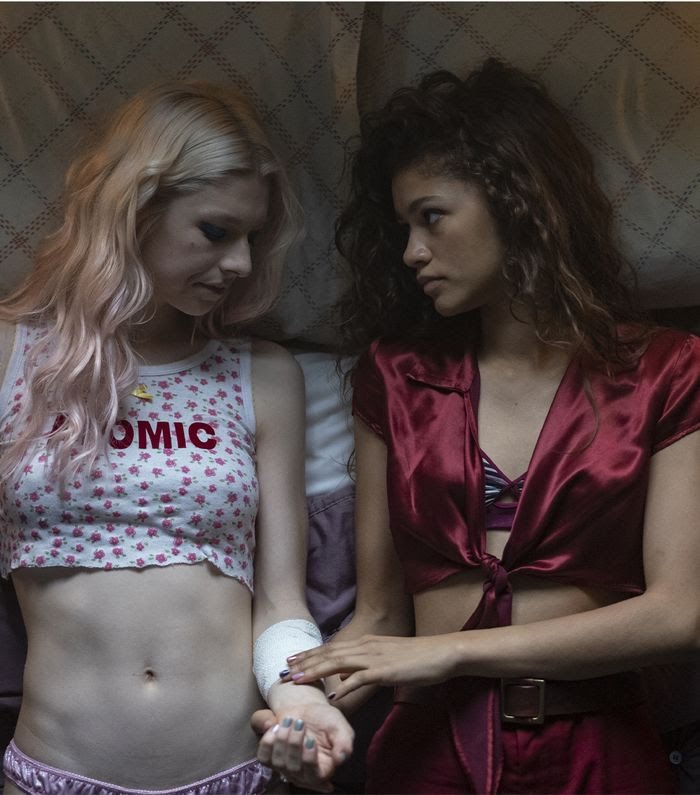

These nuances put Euphoria in touch with modern teen culture as it subverts tired tropes and places unpredictable twists above stereotypes. My favourite is Kat’s development from a victim of revenge porn, which is the focus of barely half an episode, to a cam girl dominatrix. As her illicit sex tape gains views, she decides to makes an account of her own under the alias ‘kitten kween’ despite knowing the repercussions of child pornography.
The way Kat gets her sex tape taken down foreshadows her later sexual exploration as she blackmails ‘Thing 1’ (who was involved in spreading word of the tape) into paying for her MAC purchases during a shopping spree with his obedient little credit card. Only the surface of her self-esteem issues were scratched but I love how they focused on her weight for a just few moments to set the scene.
No episode is boring and Euphoria provides a real breath of raw storytelling amidst the tired oeuvre of teen shows that play on the same stereotypes as the early 2010s.
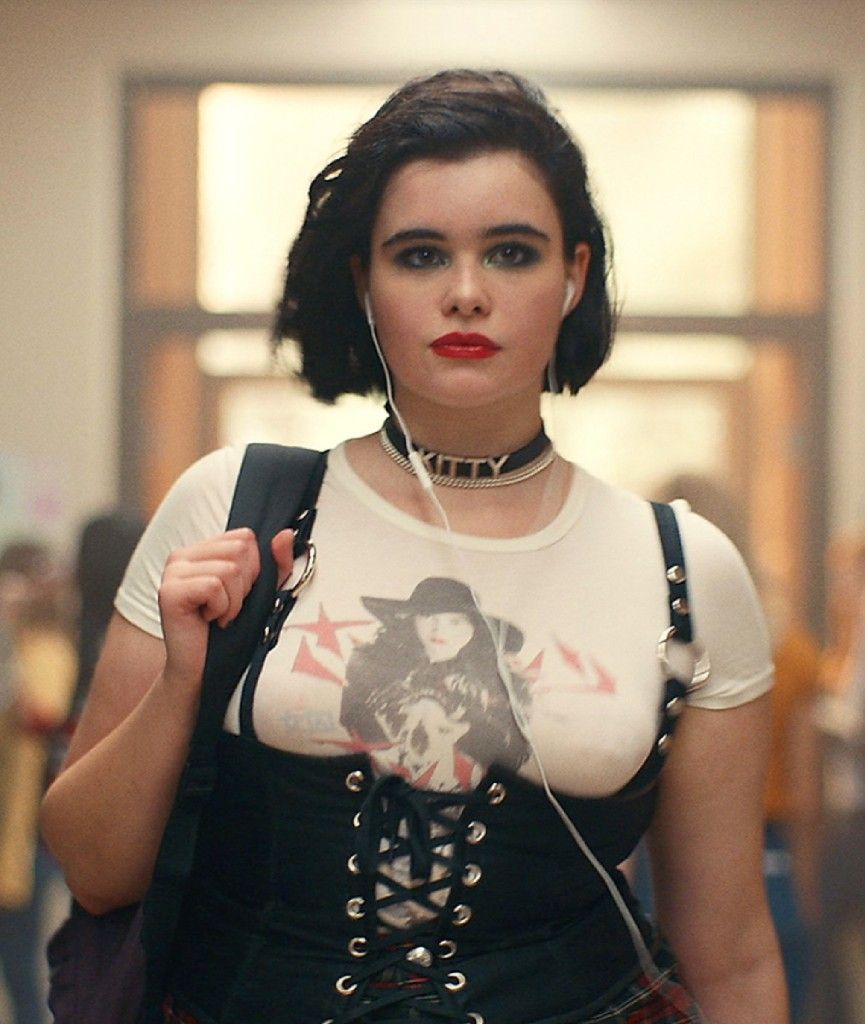
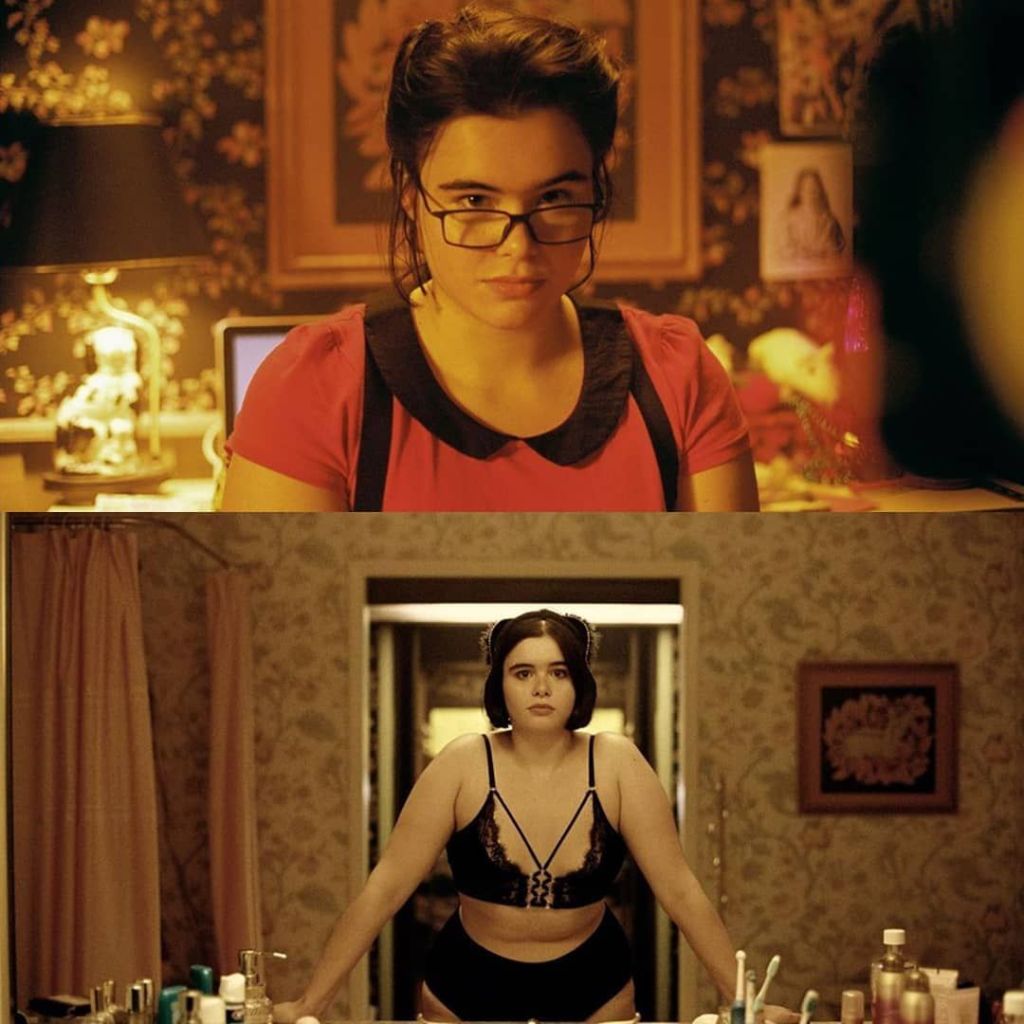
It admittedly follows in the footsteps of well-written teenage dramas like Skins and even Glee which, although problematic, allowed us to stomach heavier topics with bouts of humour and less serious plots. In Euphoria’s case, the lightness is usually generated from the aesthetics, but there are also a few laughs.
However, the fact that all the characters seem to end up back where they started, except for maybe Cassie, is also frustrating. Like art, this perhaps imitates real life and illustrates how toxic behaviour patterns are very hard to shake off.
The Looks and their Characters: Everyday Editorial

Euphoria first entered my consciousness through the endless barrage of TikToks, Instagram posts and YouTube makeup tutorials dedicated to enshrining the glorious looks of Maddy Perez (Alexa Demie), Kat Hernandez (Barbie Ferreria), Jules Vaughn (Hunter Schafer), Cassie Howard (Sydney Sweeney) and Rue Bennett (Zendaya).
With weary an idea about any of the themes and issues explored, the aesthetics and ensembles alone caught my attention. The ethereal looking stills and mini edits set to music told me nothing of the show’s substance but everything I needed to know about its iconic status. Everyone was referencing it and the eye jewels and glitter were becoming re-popularised after that festival era in 2018. Those gems combined with the purple LEDs made it feel like I had entered Tumblr.
The vast proliferation of absolutely iconic scenes is paired with the eponymous wardrobe and makeup looks. Every character has their own distinctive styles of dress to complement their personality and the outfits they wear give me the confidence to overdress for everything. This is part of what makes the series so memorable- you can literally dress as these characters for Halloween and fellow viewers would know exactly who you’re emulating.
According to Teen Vogue, the actresses all created mood boards and had lots of input for the outfit choices.
Rue’s tomboy look places comfort central but she still incorporates smart suits when she becomes ‘Detective Rue’. The burgundy hoodie she repeatedly wears is suggested to be her father’s and almost acts as a symbolic motif when the dancers at the end are clad in the same red-hooded robes in the theatrical finale. She is raised onto their shoulders like a pyramid. causing some viewers to suggest they represent the loved ones in her life raising her up. Although Rue goes mostly makeup-up free, there is no escaping the infamous glitter and gem-stones combo which made Euphoria the phenomenon it is. I remember how seeing the glitter tear pictures made me think the show was about teenage aliens or something when it first came out.
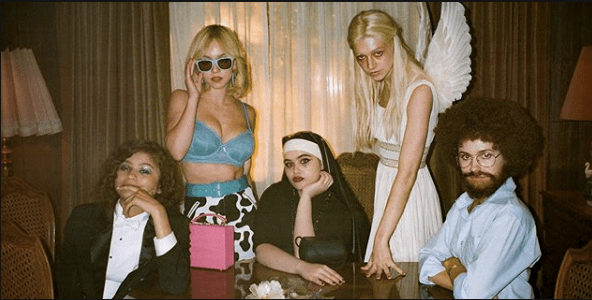
Jules is initially painted as a living anime character who’s moon-lit bike rides reminded me of Kiki on her cute little broom (from Kiki’s Delivery Service). She wears soft, pink colours and delicate tennis skirts but, as Jules begins to care less about men and heteronormativity, she incorporates more masculine cuts as well as pieces like trousers which have bolder colours and stronger shapes.
The Romeo and Juliet movie reference in the last episode, where Jules is dressed as the angel (Juliet) to Rue’s tuxedo clad Romeo, gave me life- especially when she began reciting Shakespearean lines and manically pulled Rue into the pool.
Shafer started her career as a model so it’s unsurprising that her look is very editorial, but a lot of the other characters (Maddie and Kat) also normalise the incorporation of editorial looks in real life situations.

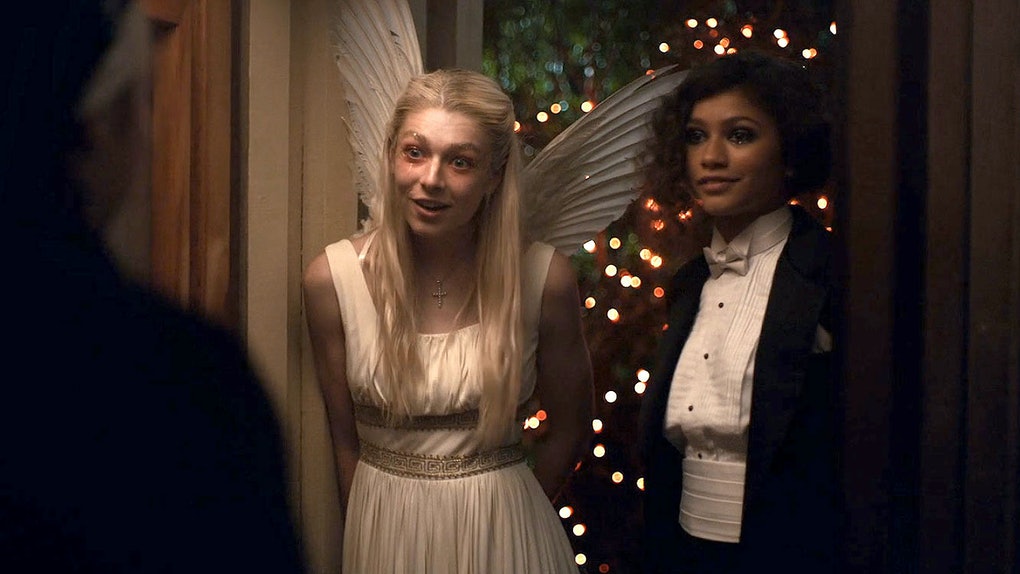


As mentioned, Kat embraces red and black and begins wearing lingerie like harnesses, body suits and underwear on the outside of her regular clothes as her kitten kween persona take off while she repeats her mantra: “all I know is that all men are pathetic”. That moment when she answers ‘”no” to “did you cum?” gives me hot girl Meg energy. The fact she wrote a one direction fan-fic and is tumblr famous is a hilarious detail too.

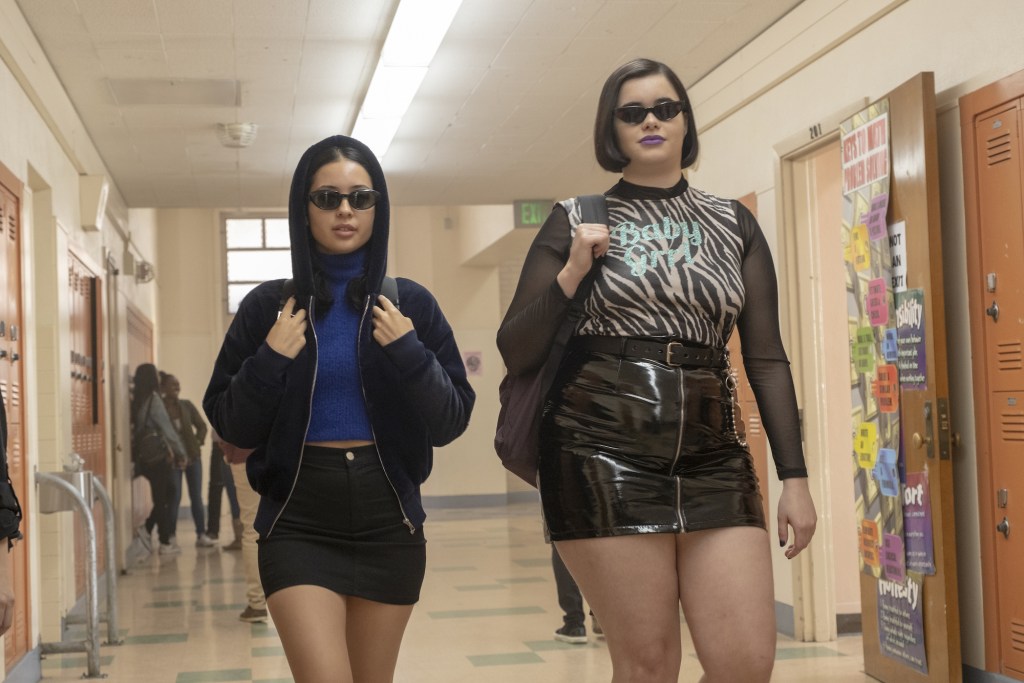

Cassie dresses very nicely with one intent in mind: social desirability. Her girly tops highlight her décolletage while her cute skirts and jeans are just that: cute. Her usually less adventurous makeup is either soft, classic or seductive but her ice skating look is breathtaking. She exudes ‘sex symbol’ with every piece. Her costumes are significant because she is frequently overly sexualised and slut-shamed by men and she reluctantly obeys McKay’s command to cover up- but only around him.
Even when she has just hit puberty in her flashback, wearing a high neck white dress that emphasises her chastity, the creepy uncles in her family comment on her body. For Halloween, she dresses as Alabama Worley, a prostitute from the 1993 drama mystery True Romance. This is an act of rebellion against McKay, who forces her to change out of it the night before to mute her power.

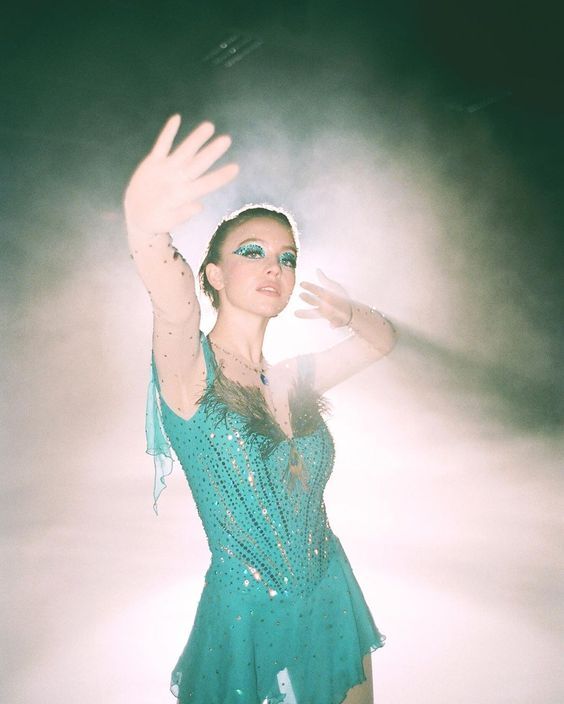

The small details of Nate’s appearance also encapsulate his character so well, from his perfectly coiffed hair to the very basic, masculine clothing choices (if you can call them that) taken straight out of Topman. This word isn’t even in my vernacular but Nate’s revoltingly white and shiny pickup truck screams ‘douche bag’. His standards for women (no to body hair, no to ‘cankles’ but yes to tennis skirts and virginity) let us see him for the misogynist he is, if it wasn’t already clear.

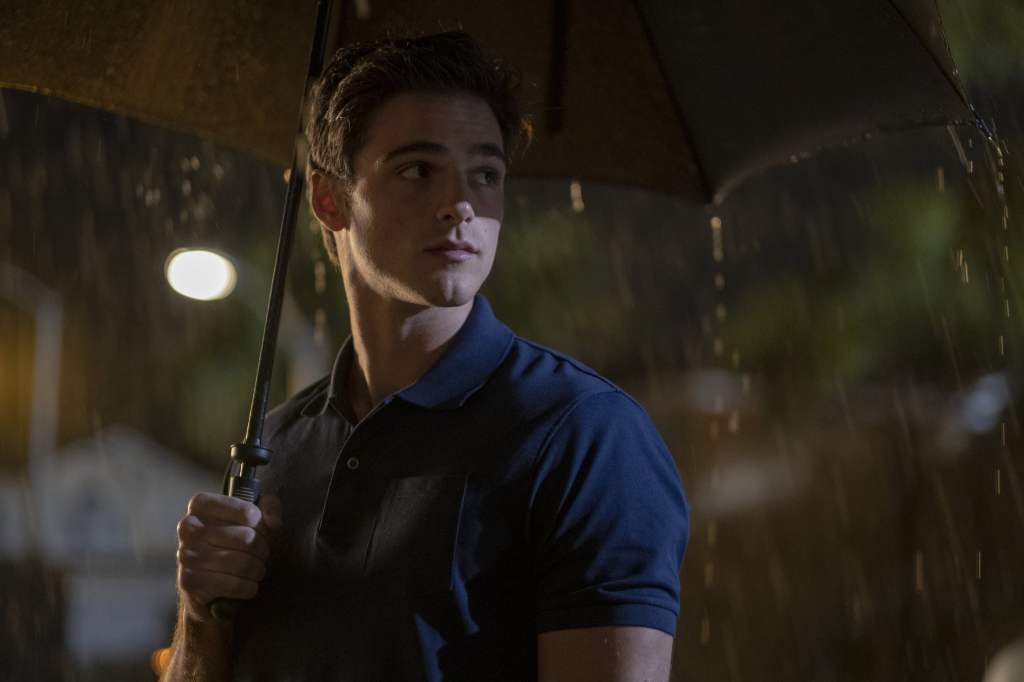

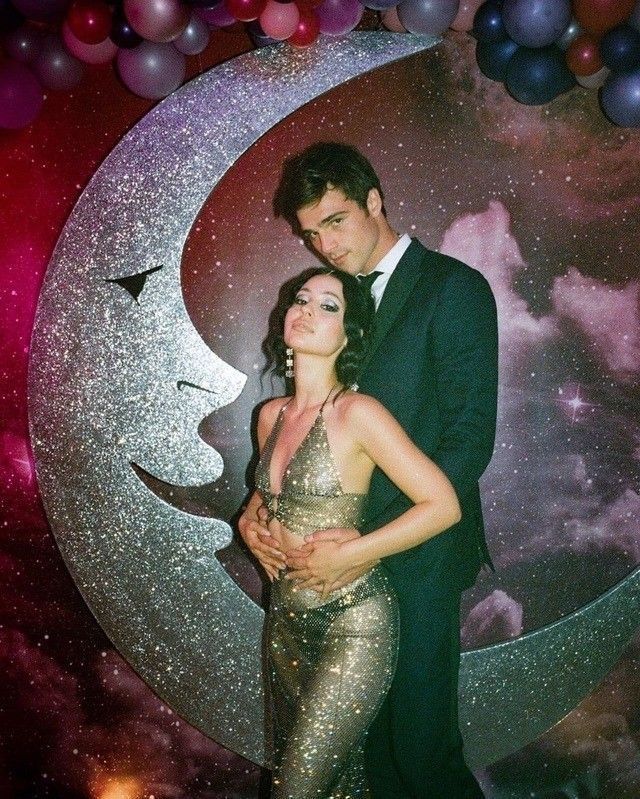
Maddy is the CEO of ‘Euphoria Makeup Looks’ with her dark blue eyeshadow and 70’s inspired flared trousers. THE look of the season has to be her cut-out pants and top ensemble at the carnival. She wears it while she does THAT slow clap right before she knocks the award-winning chilli over and litters our screens with the c-word expletive (which she constantly throws around with a smirk). Similar to Cassie, she refuses to change out of this outfit despite Nate telling her she “looks like a hooker” and to “come back when you look like a person.” I also just know she’s part of cherry emoji Twitter.
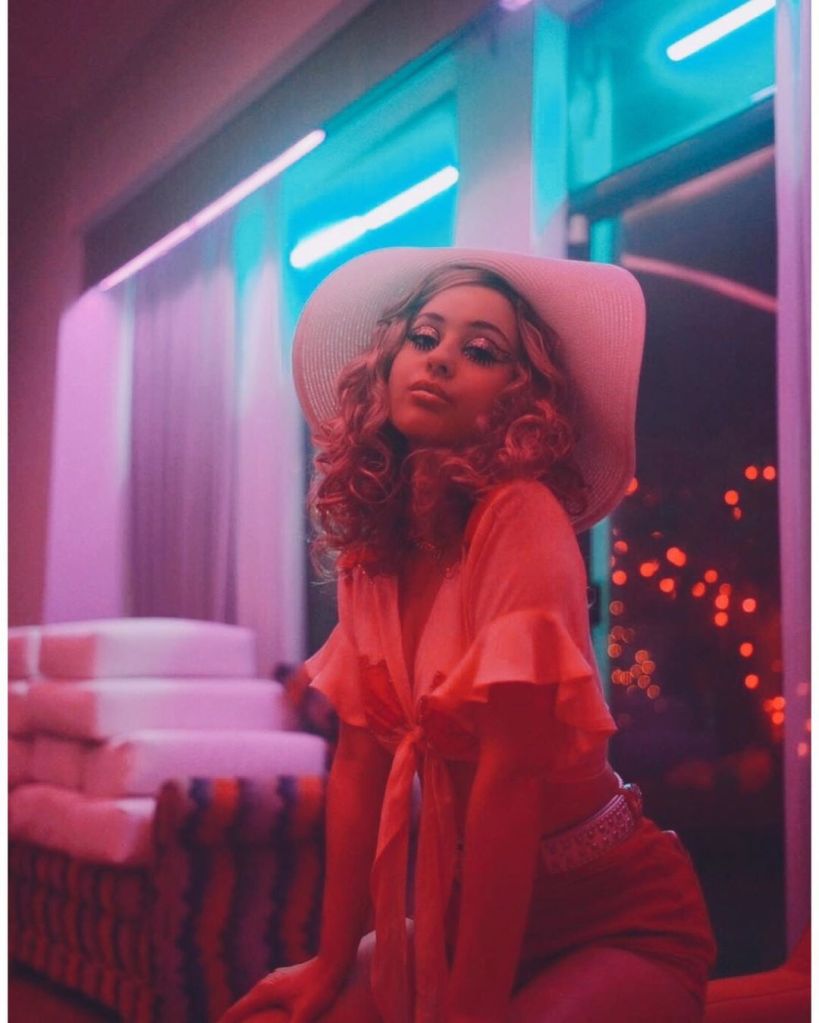

In Maddy’s episode, it’s revealed that she was a pageant girl who’s always dressed exactly the same. Her realisation that she doesn’t want to do anything at all (literally) coincides with her idolisation of Sharon Stone in Casino (her “spirit animal”). She coos, purrs, whimpers and moans into Nate’s ear that she wants the same fur coat and, naturally, she gets it.
The pink glow of her room reiterates her retro hyper-feminine vibes and she reminds me a lot of Kali Uchis with her 50’s/60’s inspired attire, and gangsta femme fatale aesthetic- especially the white, wide-brimmed hat in the Halloween episode (when Nate has the audacity to come dressed as a prisoner, also showing us just how much of a cocky b*tch he is).
Maddy also wears a lot of matching two piece co-ord sets, like the fake Louis Vuitton printed cheerleader ensemble which catches Nate’s attention. She’s always perfectly put together with sexy acrylics, channelling modern day Influencer vibes. Euphoria encapsulates the popular post-2016 trend which borrows inspiration from y2k and 90s throwback fashion, such as flares and cat-eyed sunglasses, with a modern ‘baddie’ twist.
Just as Gossip Girl was the television fashion staple of the 2010s, Euphoria finally gives us what we’ve been needing and incorporates the current fads in a high fashion way which also encapsulates what ‘normal’ teens are actually wearing these days.


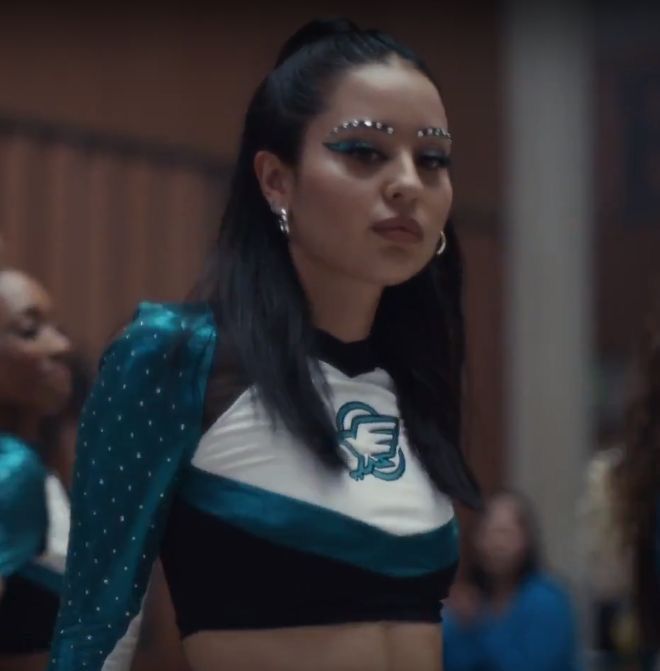
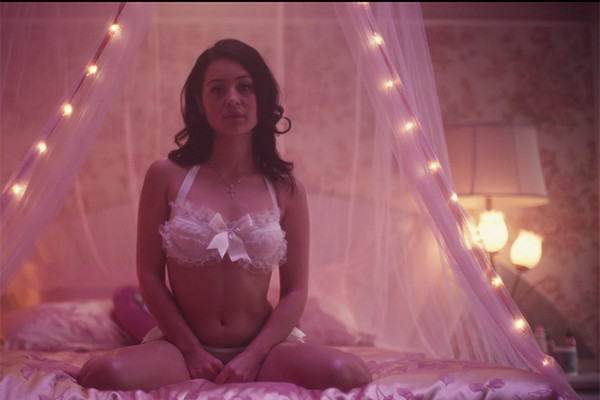
Euphoria’s costume designer, Heidi Bivens, told Teen Vogue:
“I wanted the costumes to give you a quick read, if you just glanced at the character. Whatever we did, I wanted it to feel timeless, but at the same time, like a time capsule.”
The Music
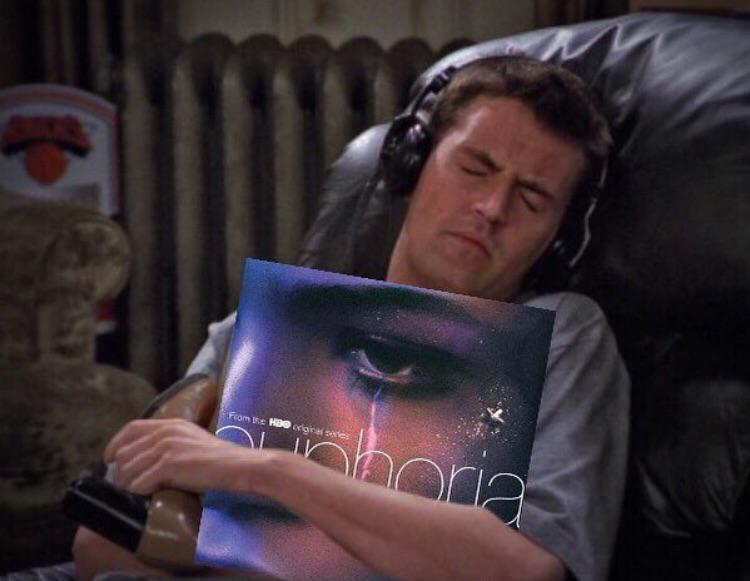
Let’s not forget the soundtrack. Impeccable. Labrinth’s ‘Euphoria’ (Original Score from the HBO Series) heightens the emotion in many pivotal scenes, from the carnival to the ending where the track we were teased with throughout, ‘All For Us‘, is belted and Rue begins dancing with the mysterious figures.
‘Forever‘, ‘When I RIP‘ and ‘Mount Everest‘ also stand out as songs I would listen to outside the show’s context and they’re paired with exactly the right moments. Their hypnotic sounds and operatic vocals give you chills and thrills alike.
There’s a huge selection of genres dispersed throughout, from the Spanish vocals of ‘Mi Gente’ and ‘Malamente‘ to Megan Thee Stallion’s hot girl hype in ‘Cocky AF‘. The legendary 80s bops like Madonna’s ‘Lucky Star‘ and DeBarge’s ‘Rhythm of the Night‘ are a quirky throwback addition.
Honorary mention to Kali Uchis’ ‘Loner’ as well.
A mix of trap and modern rap fit the party scenes seamlessly while the sweeter, more soothing sounds of ‘Just Me and You‘ by the Dreamliners and the 50’s classic ‘Mr Sandman act as a striking contrast with darker scenes.
The Problems and Controversy
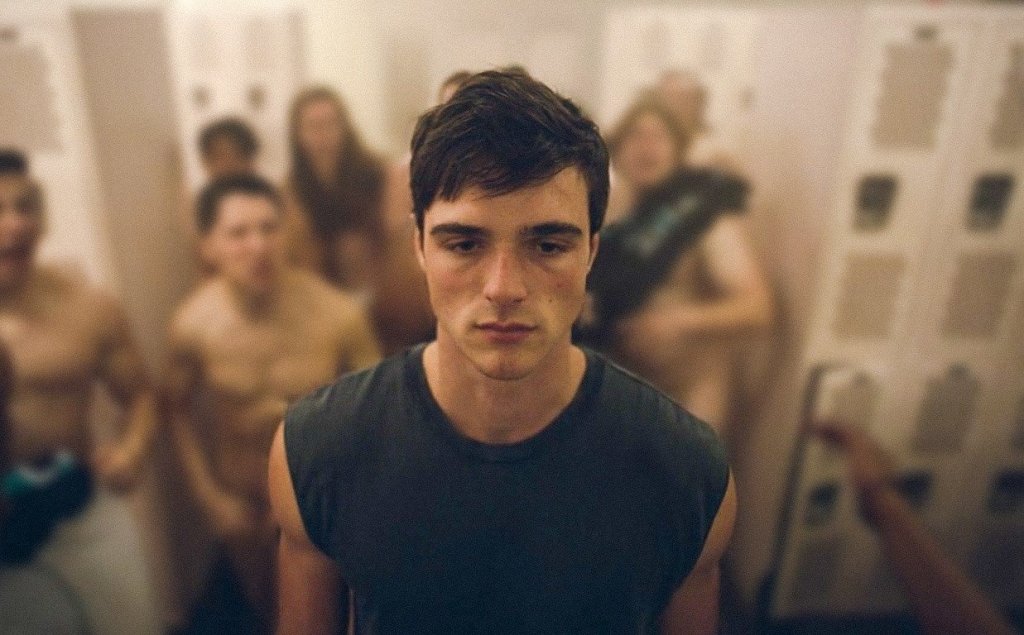
Euphoria covers a wide breadth of topics- maybe sometimes too wide. There is drug addiction, revenge porn, queerness, abusive relationships, statutory rape, daddy issues, fraternity culture, slut-shaming, toxic masculinity… I’m exhausted just writing this list and I haven’t even finished yet.
Some people may find it hard to process, especially due to the graphic sexual imagery meant to represent teenage bodies. Although depression and drugs aren’t as romanticised as they are in other teen shows, the unnecessary nudity and expletives are perhaps better targeted towards an 18+ audience- but they have led to so much ‘moral outrage‘ that I don’t really see a case for.
However, the ‘no holds barred’ approach is not appropriately marketed towards younger high school kids and I personally don’t have a problem with it but I still wouldn’t feel comfortable with my 14 year old sister tuning in. The problem is she really wants to because it’s portrayed as a fun and glamorous looking show which everyone references and sees all over social media.
Cassie’s ‘carousel orgasm’ arguably normalises female pleasure and sexuality while exploring the way she is slut-shamed as the slow motion visuals pan over the men’s faces in a way that accurately captures the lascivious leers us girls are used to. But it also over-sexualises an already sexualised teen girl, perhaps unnecessarily.
I also thought the male nudity, which far outweighed female nudity, was a nice subversion to the normalisation of objectified female bodies on screen. Levinson’s staging of the locker-room scene can be read as an inadvertent homage to the opening of Carrie which pruriently lingers on the naked bodies of teen girls.
But, again, the many instances of male genitalia were so frequent they were funny, pointless and over-saturated. They didn’t add anything to the scene a lot of the time. All those d*cks was kind of just…there. I’m the opposite of a prude about these things, but I think either eliminating that or marketing it towards older audiences would solve all the ‘moral panic’ which ensued upon its release.


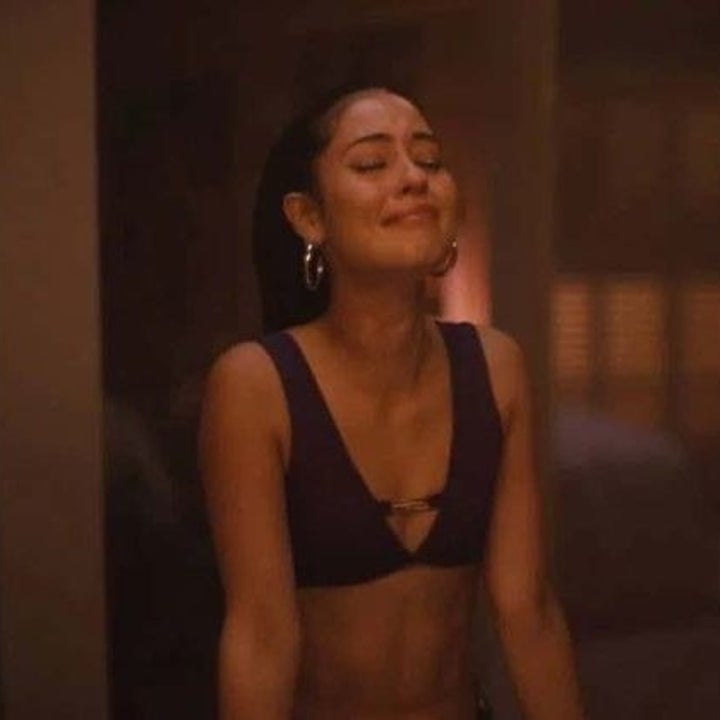
A few of the plot points also made no sense, like when Jules said she was in love with Anna after meeting her just one time and later getting delusory visions of a glitter-adorned Nate telling her she loves him. This suggests she desires him but it’s never explored in other ways.
I also demand a backstory episode for Lexi and Fez who deserve better.
Euphoria has been labelled unrealistic by many because it’s so much more drug, sex and party oriented than your average teen life. But to me it’s just a very concentrated and deliberately exaggerated depiction of the real problems faced by many; there may be more glitter on their faces than every sorority girl combined but the sensationalism of certain moments adds to the story’s dramatic effect. Shows marketed towards teens, like Skins, often take a realistic route to seem gritty but this portrayal is perhaps more interesting and relevant to gen-z audiences.
One major problem with the series is that it features no black women characters (Zendaya is biracial). For a show that is hailed as celebrating diversity, it needs to do a lot more work to champion it. As Amandabb says in her ‘Everything wrong with Euphoria’ video, any of the characters could have been cast as black women- so why weren’t they?
The show of a generation

Despite the (kind of valid) controversy and criticism surrounding Euphoria, it instilled my hope in teen shows; the costumes, stories, themes and music all capture the gen-z experience. We’re in this golden era of television but I can’t think of a post-2016 show about high school that speaks to this generation to the same extent, other than Sex Education (or maybe On My Block and Never Have I Ever). Unlike 2000s and 90s teen shows, the focus on female sexual pleasure and relatonship dynamics is not watered down and stereotypical tropes are often subverted, progressing past the usual depictions of mental health, drugs, body image, sex work, queerness, virginity and toxic relationships.
The re-watch quality is incredible- I even started re-watching a few days after I finished it. When you know how the story unfolds, the details are so interestingly thought out and help you understand the characters even better. Euphoria is much more than the ‘boundary-pushing’ it’s been both lauded and criticised for. With messes like Netflix’s Riverdale getting renewed for countless seasons, you can’t argue with how incredibly well-made HBO’s Euphoria is.
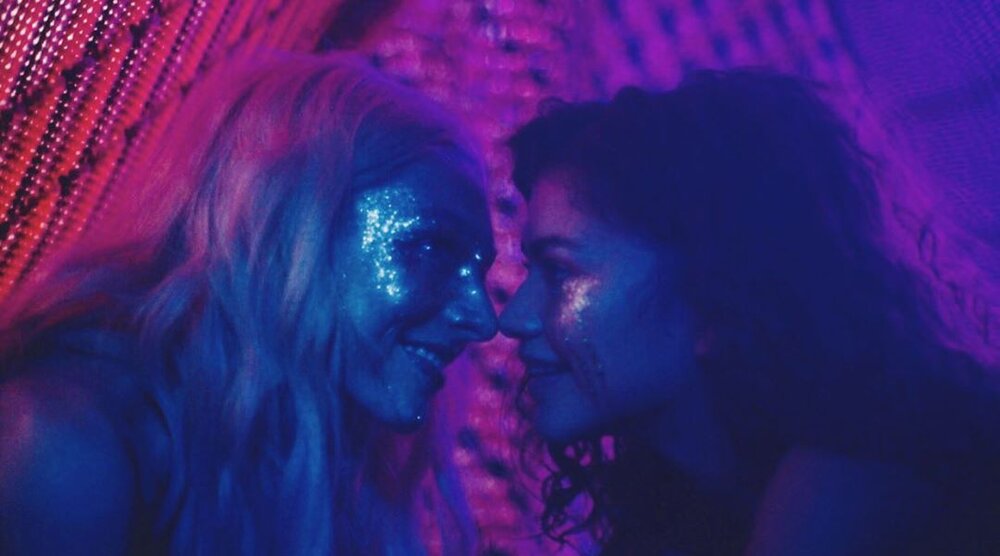
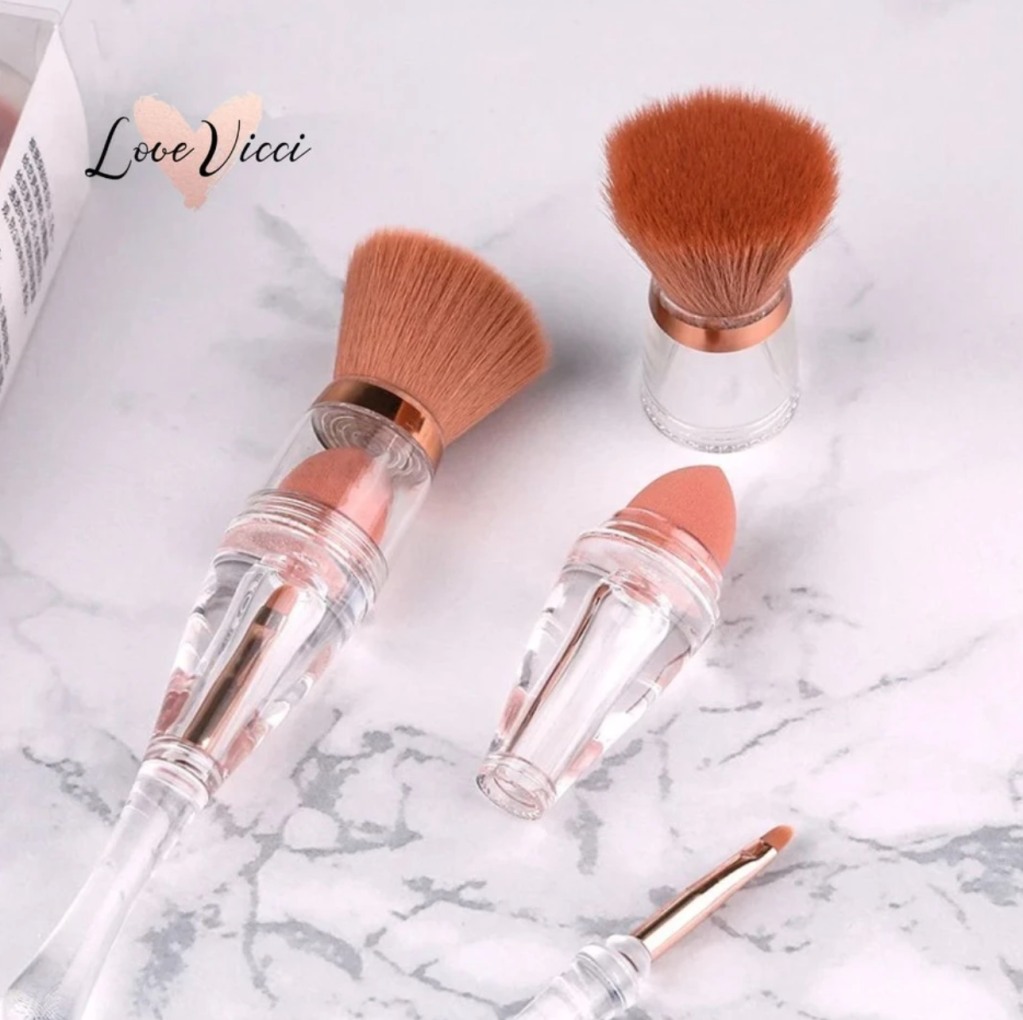


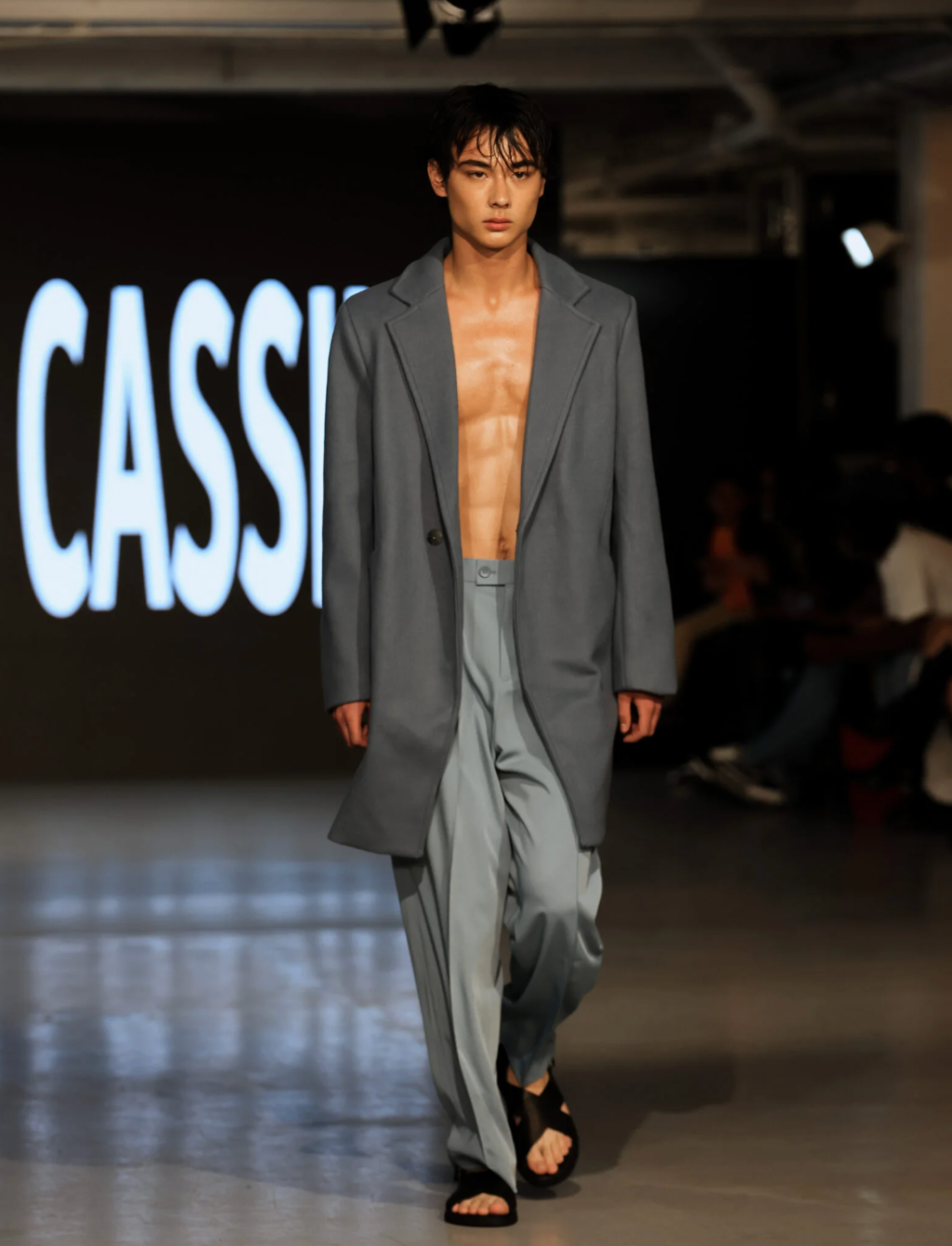
Leave a comment